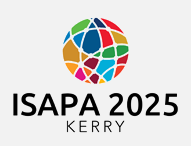Start Date
19-6-2025 9:00 AM
End Date
19-6-2025 10:30 AM
The Effects of a Digital Physical Activity Intervention On Individuals with a Severe Mental Illness.
Abstract
Introduction
Individuals with a severe mental illness (SMI) die earlier and engage in less physical activity (PA) compared to the general population [1–3]. Regular PA for the SMI population can help reduce sedentary behaviour (SB) and SMI symptoms [4–6]. Integrating digital technology with PA can provide motivation, independence and support [7–9]. SMI studies have developed digital PA interventions [4,5,10,11]. However, few have co-designed digital PA interventions to promote long-term use.
Methodology
This study has co-created a PA web-based application for SMI individuals living in an Irish mental health residential setting, with the aim of increasing PA. This application includes PA education, various visual PA options, and PA resources (e.g., Downloadable PDFs). Phase one of the intervention lasted 10 weeks, involving 12 service users (seven males). Six SMI participants were in the control. Baseline and post-phase one data collection calculated the SMI participant's body mass index (BMI) from weight and height (kg/m2) and recorded their PA levels via an accelerometer. Additionally, interviews were conducted at baseline and feedback interviews at post-phase one. The researcher visited the intervention houses twice weekly, supporting the use of the application through either one-to-one assistance or in a group setting.
Results
Accelerometer data was analysed using SPSS, finding no statistically significant improvement in i) light PA (p = 0.825), ii) moderate PA (p = 0.892), iii) vigorous PA (p = 0.465) or iv) steps ( p = 0.913); however, there was a trend towards increased light PA and steps within the week. Additionally, there was progress in decreasing SB and BMI. Interview analysis is currently ongoing.
Conclusions
The PA statistics showed no significant changes; however, trends indicated positive improvements (e.g. reduced SB, increased light PA). Based on the interviews, phase two of the intervention will be redesigned accordingly. The application can offer SMI individuals an extra PA resource, increasing the benefits of PA engagement relating to SDG3.
Recommended Citation
Forde, Shannon Aisling, "The Effects of a Digital Physical Activity Intervention On Individuals with a Severe Mental Illness." (2025). International Symposium of Adapted Physical Activity and International Symposium on Physical Activity and Visual Impairment and Deafblindness. 5.
https://sword.mtu.ie/isapa/2025/day4/5
The Effects of a Digital Physical Activity Intervention On Individuals with a Severe Mental Illness.
Introduction
Individuals with a severe mental illness (SMI) die earlier and engage in less physical activity (PA) compared to the general population [1–3]. Regular PA for the SMI population can help reduce sedentary behaviour (SB) and SMI symptoms [4–6]. Integrating digital technology with PA can provide motivation, independence and support [7–9]. SMI studies have developed digital PA interventions [4,5,10,11]. However, few have co-designed digital PA interventions to promote long-term use.
Methodology
This study has co-created a PA web-based application for SMI individuals living in an Irish mental health residential setting, with the aim of increasing PA. This application includes PA education, various visual PA options, and PA resources (e.g., Downloadable PDFs). Phase one of the intervention lasted 10 weeks, involving 12 service users (seven males). Six SMI participants were in the control. Baseline and post-phase one data collection calculated the SMI participant's body mass index (BMI) from weight and height (kg/m2) and recorded their PA levels via an accelerometer. Additionally, interviews were conducted at baseline and feedback interviews at post-phase one. The researcher visited the intervention houses twice weekly, supporting the use of the application through either one-to-one assistance or in a group setting.
Results
Accelerometer data was analysed using SPSS, finding no statistically significant improvement in i) light PA (p = 0.825), ii) moderate PA (p = 0.892), iii) vigorous PA (p = 0.465) or iv) steps ( p = 0.913); however, there was a trend towards increased light PA and steps within the week. Additionally, there was progress in decreasing SB and BMI. Interview analysis is currently ongoing.
Conclusions
The PA statistics showed no significant changes; however, trends indicated positive improvements (e.g. reduced SB, increased light PA). Based on the interviews, phase two of the intervention will be redesigned accordingly. The application can offer SMI individuals an extra PA resource, increasing the benefits of PA engagement relating to SDG3.

